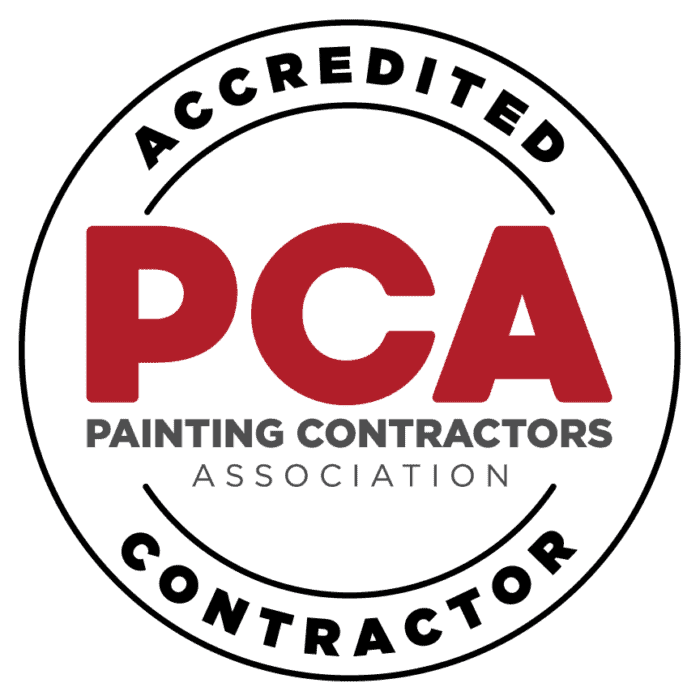Cabinet painting techniques transform any cabinets from ordinary to extraordinary. If you’re aiming for that stunning cabinet painting finish, you’re in for a treat. Let us explore 12 top-notch cabinet painting techniques that will enhance your eye for quality and give your cabinets a fresh, expert touch.
1. “Brushing” Cabinet Painting Technique
Brushing is a classic cabinet painting technique that is all about using a high-quality brush to apply paint evenly. You also don’t brush hastily. It’s about selecting the right brush and doing careful strokes.
For latex paint, choose a synthetic brush. On the other hand, for oil-based, use natural brushes. Apply paint with smooth, even strokes to ensure a professional-grade finish that withstands the test of time.
2. “Rolling” Cabinet Painting Technique
When dealing with larger cabinet surfaces, a foam roller is your trusty companion. But here’s the trick – use the right roller cover. A short-nap roller cover is ideal for smooth surfaces, while a medium-nap cover is perfect for textured cabinets. You can also explore online how to match a roller cover to a surface. Apply paint in a “W” or “M” pattern for even coverage and minimal roller marks.
3. “Spraying” Cabinet Painting Technique
If you’re gunning for that showroom-quality finish, spraying is where it’s at. Invest in a high-quality paint sprayer and practice your technique on scrap wood before tackling your cabinets. Achieving the right spray pattern and maintaining the right distance from the surface are key to avoiding drips and achieving a flawless finish.
4. “Distressing” Cabinet Painting Technique
Distressing is about artfully creating wear and tear. Use sandpaper or a scraper to gently remove paint from edges, corners, and areas that would naturally experience wear over time. Sanding by hand allows for more control, while an electric sander can speed up the process. Remember, moderation is key – you’re aiming for an aged look, not complete destruction.
5. “Antiquing” Cabinet Painting Technique
To achieve an authentic antique appearance, use a glaze in a color that contrasts with your base coat. Apply the glaze using a brush or a rag and then wipe it away from raised surfaces, leaving it in crevices and corners. This technique emphasizes the details of your cabinets, giving them a timeless allure.
6. “Color Washing” Cabinet Painting Technique
When color washing, less is more. It is a cabinet painting technique that needs to mix your glaze with a small amount of paint. Then, apply it with a cloth, rag, or brush. Work in sections, and before the glaze dries completely, use a clean cloth to wipe away excess glaze. It’s a cabinet painting technique that imparts a soft, weathered appearance that adds depth and character to your cabinets.
7. “Stenciling” Cabinet Painting Technique
Precision is the name of the game with stenciling. Use painter’s tape to secure your stencil in place, and apply paint using a stippling or swirling motion. Be sure to lift the stencil carefully to avoid smudging. It is a cabinet painting technique that can add a whimsical or sophisticated touch, depending on the design you choose.
8. “Two-Tone or Ombre” Cabinet Painting Technique
Creating a harmonious blend of colors requires careful planning. Decide which parts of your cabinets you want to paint in each color and use painter’s tape to create clean lines. For an ombre effect, blend the two colors by overlapping them while they’re still wet. This technique adds visual interest and a modern touch to your cabinets.
9. “Crackling” Cabinet Painting Technique
Achieving controlled cracks involves applying a crackle medium over your base coat, allowing it to dry, and then applying your top coat. The cracks will form as the top coat dries, revealing the base coat underneath. Experiment with different crackle medium thicknesses for varying crack sizes and a truly vintage look.
10. “Faux Wood Grain” Cabinet Painting Technique
To achieve a convincing wood grain effect, use a wood-graining tool or a dry brush. After applying your base coat, use a darker glaze to create the appearance of wood grain by dragging the tool or brush through the glaze. It is a cabinet painting technique that is perfect for adding warmth and texture to your cabinets.
11. “Sponging” Cabinet Painting Technique
The key to sponging is subtlety. Load a natural sponge or sponge roller with a small amount of paint and dab it onto the surface. Vary your pressure to create a mottled texture that adds depth. Experiment with different sponge sizes and colors to achieve the desired effect.
12. “High Gloss Finish” Cabinet Painting Technique
Achieving a flawless high-gloss finish requires meticulous eye for every detail. Sand your cabinets smooth, apply a primer, and then use a fine-grit sandpaper between coats of high-gloss paint to eliminate imperfections. A high-gloss finish reflects light beautifully, but be prepared for it to accentuate any flaws.
Final Thoughts:
Armed with these 12 cabinet painting techniques, you’re ready to transform your cabinets from ordinary to extraordinary. Bid farewell to outdated cabinets and embrace the transformation possibilities these techniques offer.
If you’re gonna DIY, make sure to practice each cabinet painting technique on scrap wood or cardboard to refine your skills. But to save time and have professional precision and finesse, reach out to cabinet painting experts like DeltaPro Painters.
Don’t wait – embark on your cabinet painting journey now and welcome a fresh, expertly finished look to your space. Call 513-995-6965 for a FREE estimate from DeltaPro Painters!





